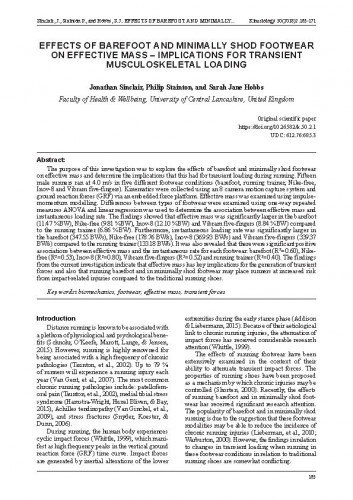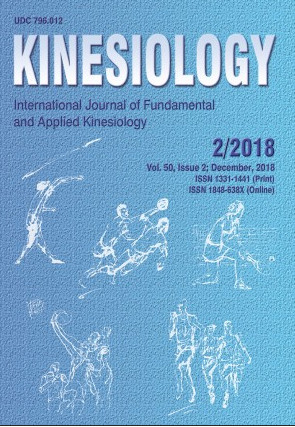The purpose of this investigation was to explore the effects of barefoot and minimally shod footwear on effective mass, and determine the implications that this has for transient loading during running. Fifteen male runners ran at 4.0 m/s in five different footwear conditions (barefoot, running trainer, Nike-free, Inov-8 and Vibram five-fingers). Kinematics were collected using an 8 camera motion capture system and ground reaction forces via an embedded force platform. Effective mass was examined using impulse-momentum modelling and differences between footwear were examined using one-way repeated measures ANOVA. The findings showed that effective mass was significantly larger in the barefoot (11.47 %BW), Nike-free (9.81 %BW), Inov-8 (12.10 %BW) and Vibram five-fingers (8.84 %BW) compared to the running trainer (6.86 %BW). Furthermore, instantaneous loading rate was significantly larger in the barefoot (347.55 BW/s), Nike-free (178.76 BW/s), Inov-8 (369.93 BW/s) and Vibram five-fingers (339.37 BW/s) compared to the running trainer (133.18 BW/s). It was also revealed that there were significant positive associations between effective mass and the instantaneous rate of loading for each footwear. The findings from the current investigation indicate that effective mass has key implications for the generation of transient forces and also that running barefoot and in minimally shod footwear may place runners at increased risk from impact related injuries compared to the traditional running shoes.
Sažetak

 Kinesiology : 50,2(2018) / editor-in-chief Dragan Milanović.
Kinesiology : 50,2(2018) / editor-in-chief Dragan Milanović.